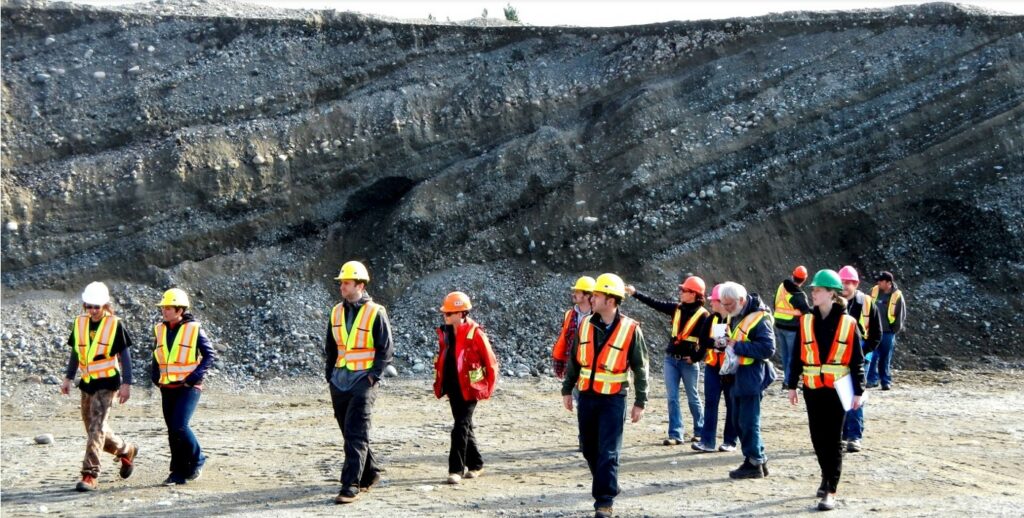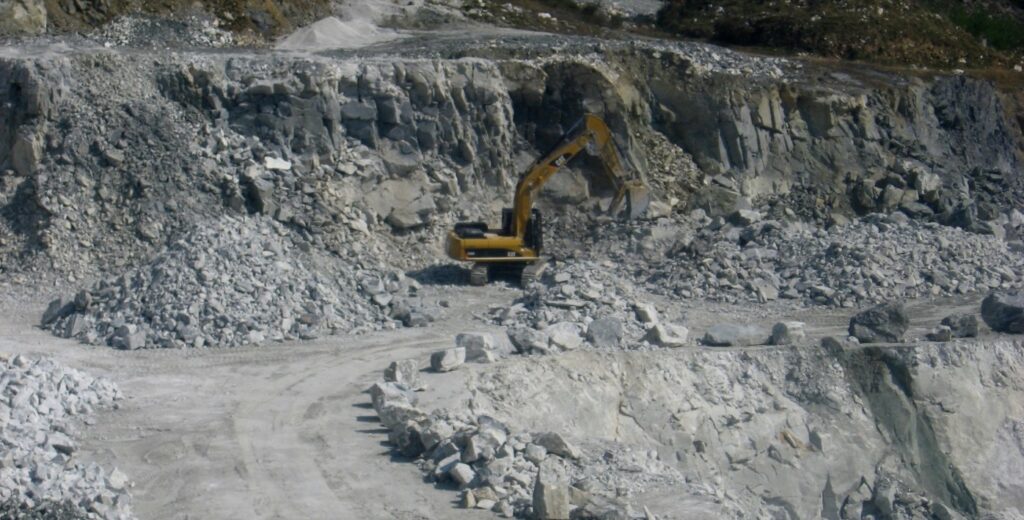8.3 Industrial Minerals
Steve Earle
Metals are critical for our technological age, but there are a lot of other not-so-shiny materials that are needed to facilitate our way of life. For everything made out of concrete or asphalt we need sand and gravel. For concrete we also need limestone to make lime (CaO). For the glass in our computer screens, and for glass-sided buildings, we need silica sand plus sodium oxide (Na2O), sodium carbonate (Na2CO3), and calcium oxide (CaO). Potassium is an essential nutrient for farming in many areas, and for a wide range of applications (e.g., ceramics and many industrial processes) we also need various types of clay.
Sand and gravel represent, the greatest volume of mined material on Earth, at around 50 billion tonnes/year, which is 20 times as much as iron . The best types of sand and gravel resources are those that have been sorted by streams, and in many regions of Canada and the northern USA (and elsewhere) the most abundant and accessible fluvial deposits are associated with glaciation. That doesn’t include till of course, because it has too much silt and clay, but it does include glaciofluvial outwash, which is present in thick deposits in many glaciated regions, similar to the one shown on Figure 8.3.1. In a typical gravel pit these materials are graded on-site according to size and then used in a wide range of applications from constructing huge concrete dams to filling children’s sandboxes. Sand is also used to make glass, but for most types of glass it has to be at least 95% quartz (which the sandy layers shown in Figure 8.3.1 are definitely not), and for high-purity glass and for the silicon wafers used for electronics the source sand has to be over 98% quartz.
Approximately 4 billion tonnes of concrete are used globally each year—a little over one-half tonne per person. The cement used for concrete is made from approximately 80% calcite (CaCO3) and 20% clay. This mixture is heated to 1450˚ C to produce the required calcium silicate compounds (e.g., Ca2SiO4) and during that process the carbonate is transformed into carbon dioxide which is released into the atmosphere. The calcite typically comes from limestone quarries like the one shown on Figure 8.3.2. Limestone is also used as the source material for many other products that require calcium compounds, including the manufacture of steel and glass, processing pulp and paper and in plaster products for construction.
Sodium is required for a wide range of industrial processes, and the most convenient source is sodium chloride (rock salt), which is mined from evaporite beds in many parts of the world. Rock salt is also used as a source of sodium and chlorine in the chemical industry, to melt ice on roads, as part of the process of softening water, and as a seasoning. Under certain conditions the salt sylvite (KCl) accumulates in evaporite beds. The potassium is used as a fertilizer.
Another evaporite mineral, gypsum (CaSO4.2H20) is the main component of plaster board (“drywall”) that is widely used in the construction industry.
Rocks are quarried or mined for many different uses, such as building facades, countertops, stone floors and head-stones. In most of these cases the favoured rock types are granitic rocks and marble. Quarried rock is also used in some applications where rounded gravel isn’t suitable, such as the ballast (road bed) for railways, where crushed angular rock is needed because it provides a more stable base.
Exercise 8.3 Sources of Important Lighter Metals

Exercise answers are provided Appendix 2.


